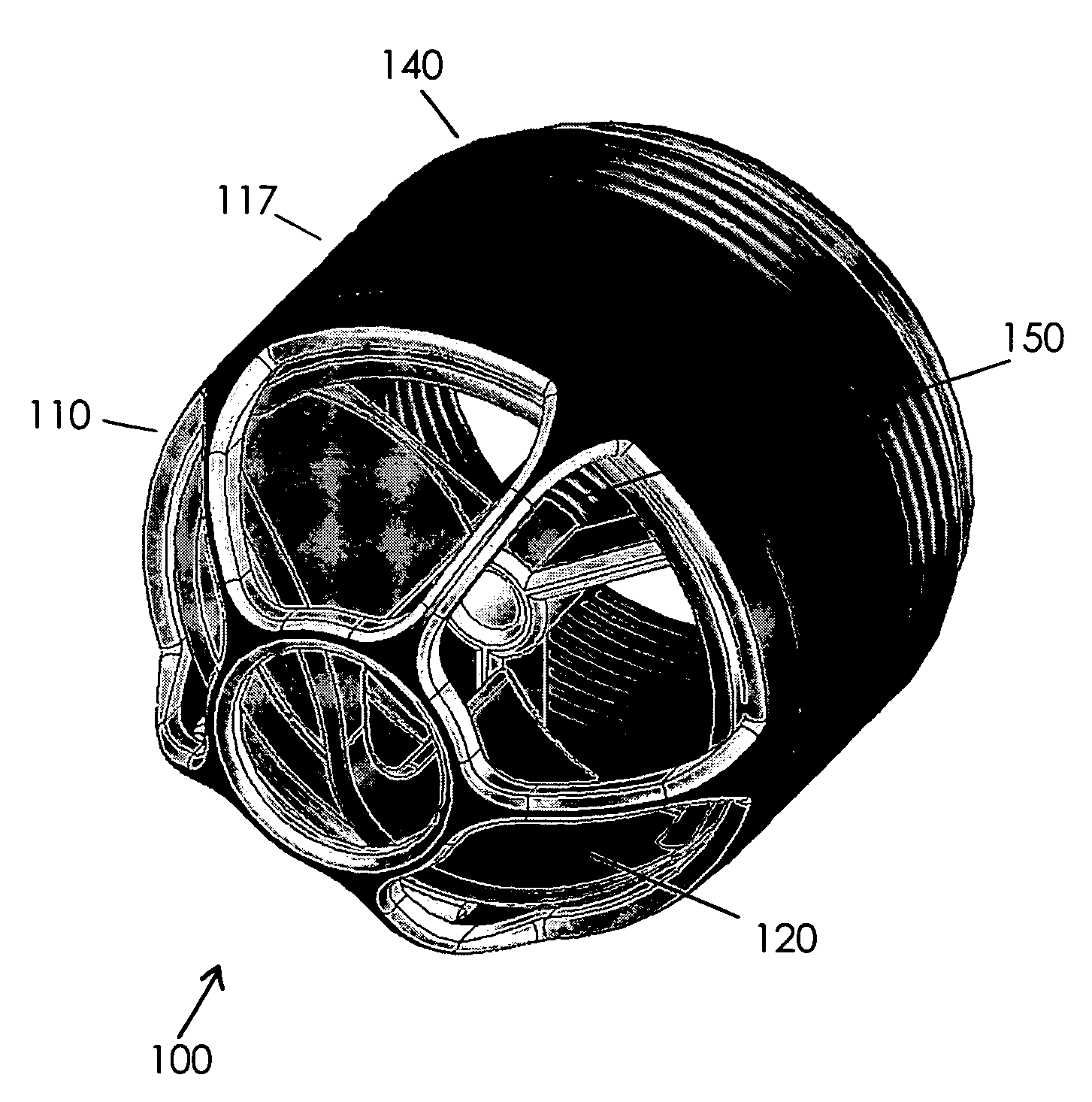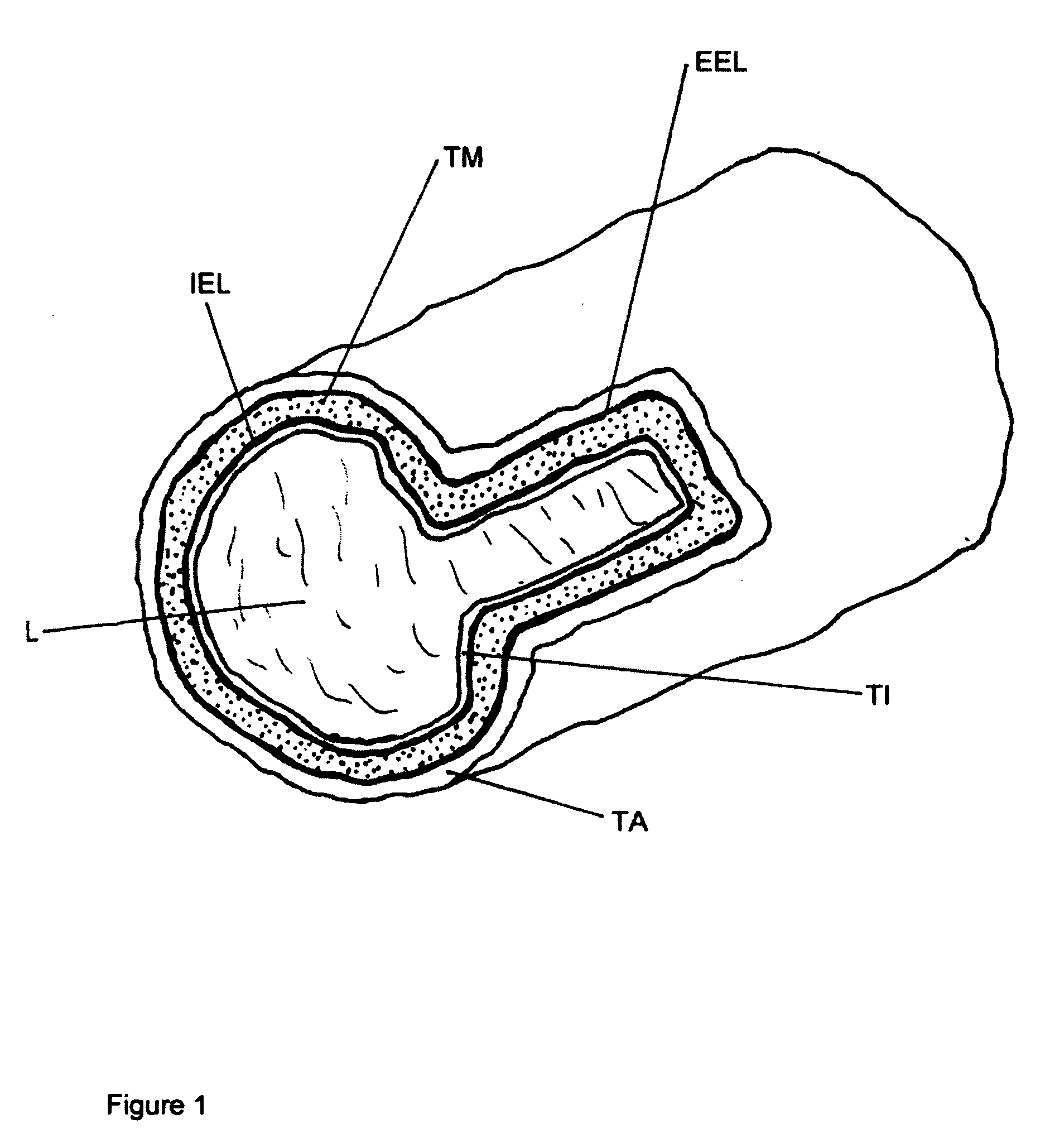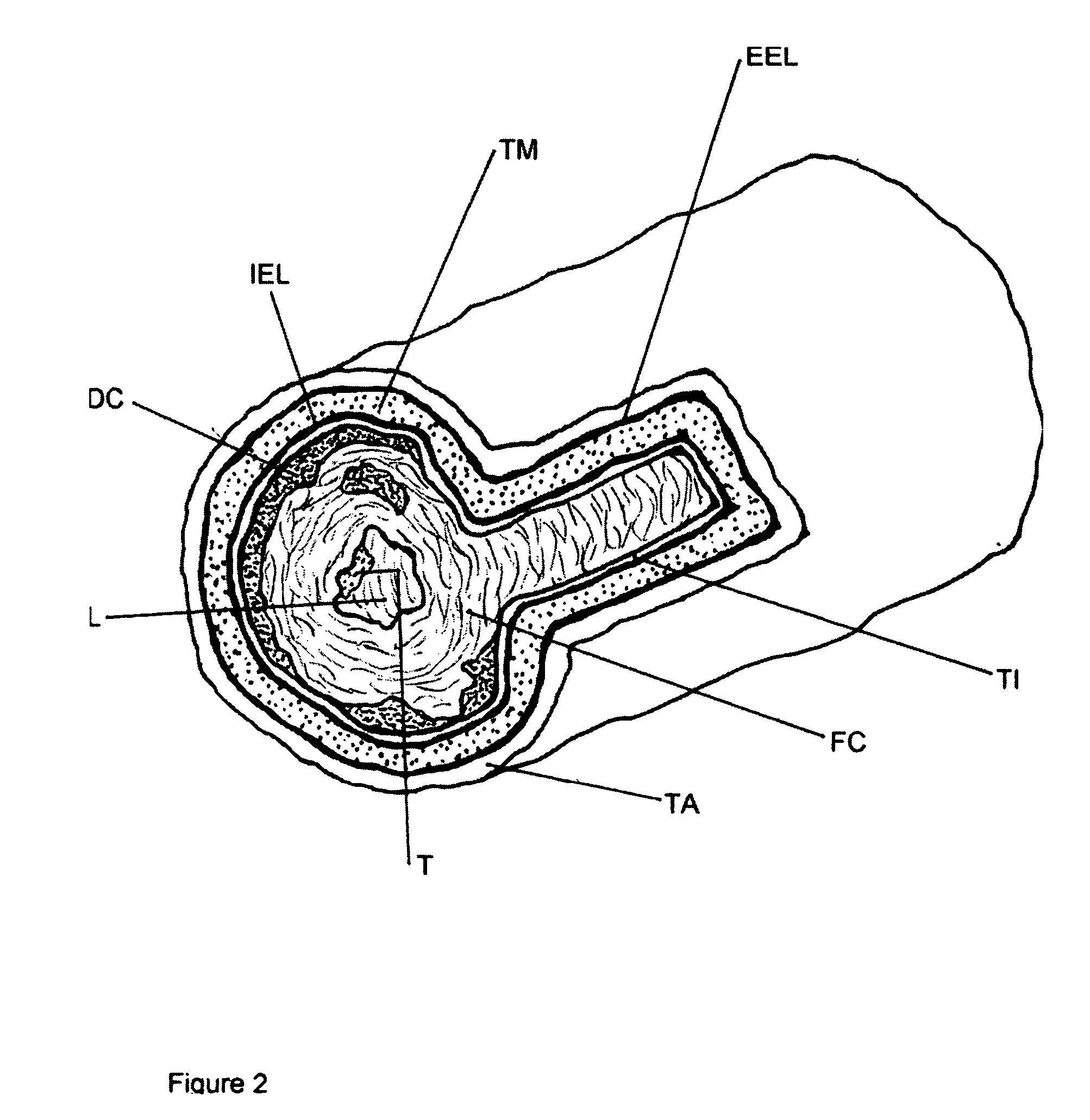Forward-directed atherectomy catheter
a catheter and forward-directed technology, applied in the field of forward-directed atherectomy catheters, to achieve the effect of greater relative stretch for
- Summary
- Abstract
- Description
- Claims
- Application Information
AI Technical Summary
Benefits of technology
Problems solved by technology
Method used
Image
Examples
embodiment 200
[0041]FIG. 4a shows a second preferred embodiment 200 of the catheter system. The main components consist of the distal housing assembly 210, the internal rotational cutter 220, the torqueable, flexible catheter shaft assembly 140, and the torqueable, flexible internal drive shaft 150.
[0042] A second preferred embodiment of the distal housing assembly 210 is shown in FIG. 4b. In the preferred embodiment shown in FIG. 4b, the distal housing assembly is comprised of two separate components for ease of manufacturing. The distal portion is the convex housing 211 and the proximal portion is the collar housing 217. The convex housing contains multiple openings or cells 212 separated by struts 213, an outer surface 214, an inner surface 215, and a proximal annular face 216. The edges of each strut are rounded so as to present an atraumatic surface when the struts are in contact with the vessel wall. Alternate embodiments 280 and 29 of the convex housing are shown in FIG. 4f and FIG. 4g res...
second embodiment
[0047] A preferred embodiment of the internal drive shaft 150 is shown in FIG. 4a and FIG. 4d. In this embodiment, the drive shaft is constructed of a single wound coil. The direction of the winding may be in either direction, but a preferred method may be to wind the coil clockwise (as looking proximal to distal along the drive shaft axis) if the internal cutter is to be rotated in a counter-clockwise direction. In this way, the rotational force upon the drive shaft will serve to “tighten” the coil in its wound configuration. In a second embodiment, the drive shaft may be fabricated from a layered coil configuration similar to that described for the catheter shaft, however instead of three layered coils only two are used. This configuration is referred to as a “Bi-Plex” and is utilized for greater flexibility, however torque transmission is afforded generally in one rotational direction only. If the direction of the internal cutter is again rotated in a counter-clockwise direction,...
embodiment 300
[0050]FIG. 9 shows a preferred embodiment 300 of the catheter system that employs the fluid-propelling element 160, and also shows the distal housing 211, the collar housing 217, the internal cutter 220, the catheter shaft 140, and the internal drive shaft 150. As vascular plaque material is shaved within the distal housing 211 it will become suspended within the infused saline solution and the fluid-propelling component 160 will serve to quickly remove this fluid suspension from the interior of the distal housing 120 and into the annular space between the catheter shaft 140 and the drive shaft 150. Referring to the preferred embodiment in FIG. 8, if the fluid-propelling component 160 is rotated counter-clockwise in a continuous fashion, as viewed proximal to distal along the catheter central axis, fluid within the distal housing will be urged to flow in a proximal direction within the annular space between the drive shaft 150, and the inner surface of the catheter shaft 140. Altern...
PUM
 Login to View More
Login to View More Abstract
Description
Claims
Application Information
 Login to View More
Login to View More - R&D
- Intellectual Property
- Life Sciences
- Materials
- Tech Scout
- Unparalleled Data Quality
- Higher Quality Content
- 60% Fewer Hallucinations
Browse by: Latest US Patents, China's latest patents, Technical Efficacy Thesaurus, Application Domain, Technology Topic, Popular Technical Reports.
© 2025 PatSnap. All rights reserved.Legal|Privacy policy|Modern Slavery Act Transparency Statement|Sitemap|About US| Contact US: help@patsnap.com



